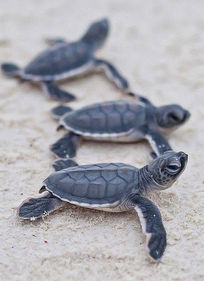
“IN-SITU” NEST PROTECTION AND
RESEARCH PROGRAMME
Sea turtle nest protection efforts fall into 2 broad categories: ex-situ (Latin for “outside of”) and in-situ (Latin for “in place”). Ex-situ strategies primarily focus on relocating eggs to protected hatcheries, where they are reburied, hatched, and hatchlings are later released after a few days in tanks. In-situ protection allows nests to remain undisturbed in their natural habitat, maximizing hatching success and preserving natural processes.
The Turtle Conservation Project’s in-situ nest protection and research program engages former egg collectors in community-based conservation to protect marine turtle populations at the Rekawa and Kosgoda rookeries. Funded by an UNDP GEF Small Grant, the project aims to safeguard all nests within its boundaries, provide alternative livelihoods to former egg collectors, train locals in income-generating activities, promote eco-friendly tourism, and raise awareness about marine conservation.
The project organized 21 egg collectors in Rekawa and 15 in Kosgoda to become nest protectors. They were offered employment as research assistants and trained as tourist guides, with opportunities to obtain government-certified guide licenses, providing sustainable income alternatives. The initiative has received support and recognized by donors, including UNDP GEF-SGP, UNDP Lion’s Share, Columbus Zoo and Aquarium (USA), and Sea Turtles Inc. (USA).















